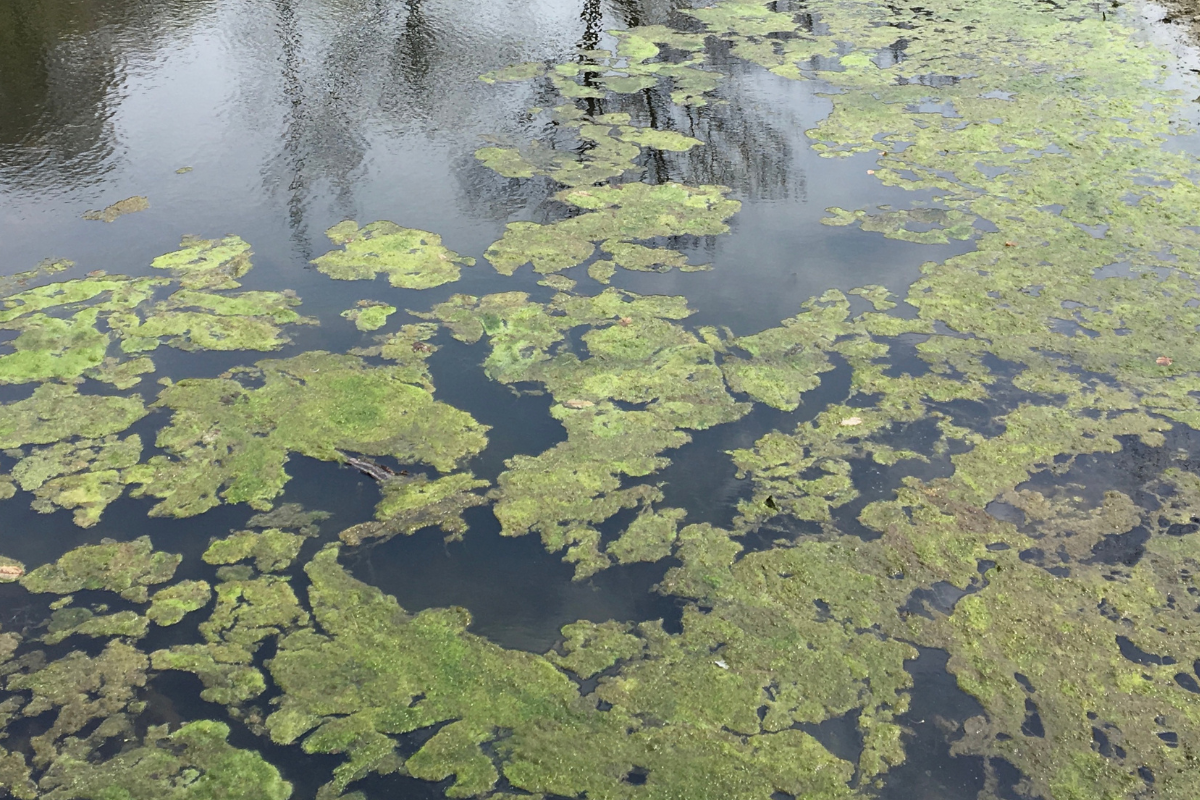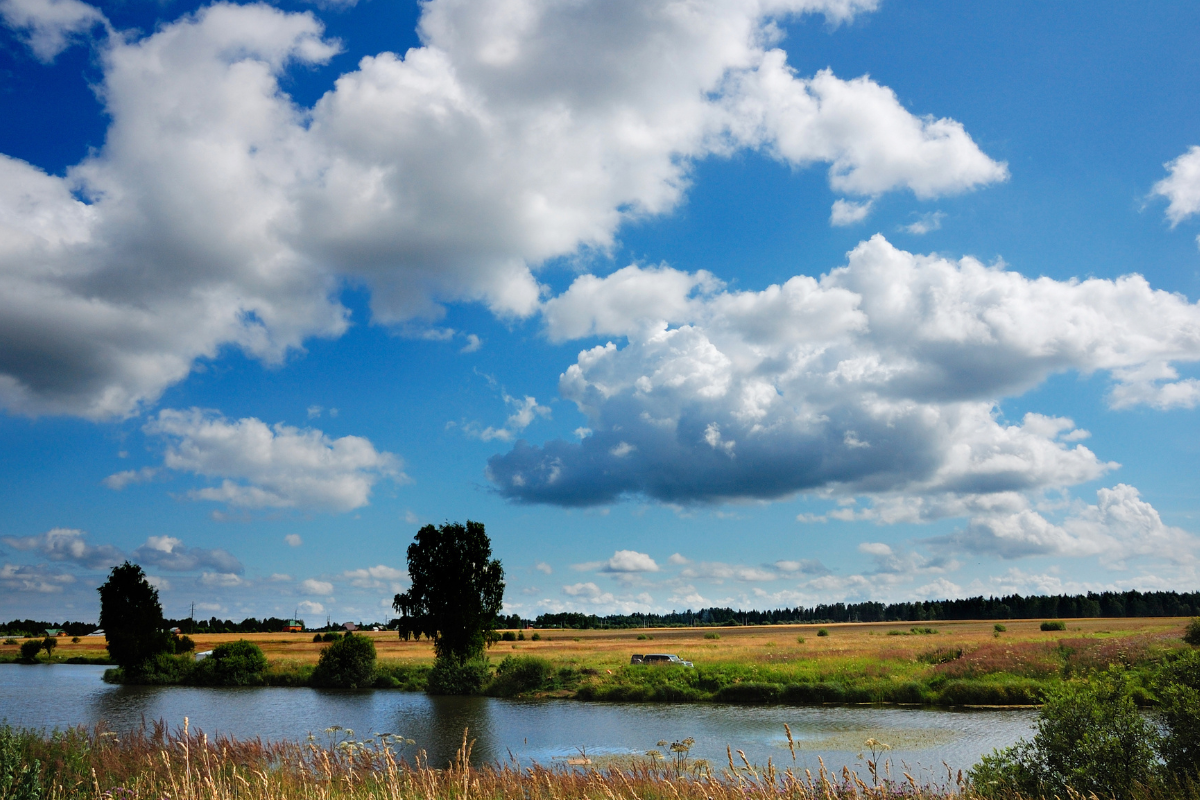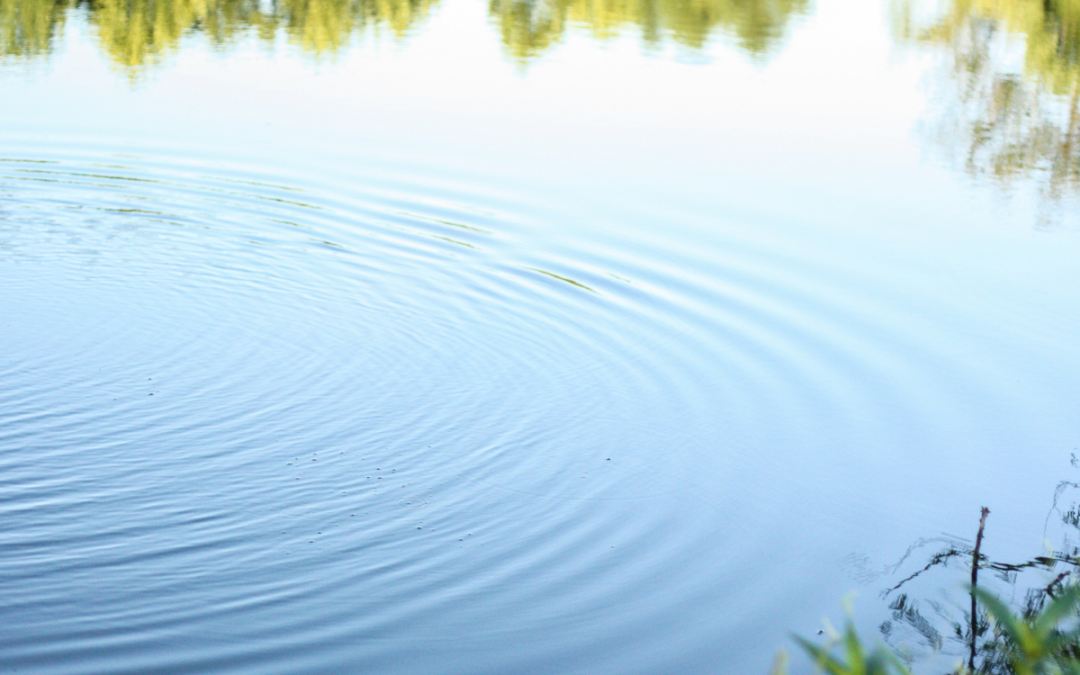Our previous blog discussed the importance of dissolved oxygen (DO) in ponds and sources of dissolved oxygen. In this blog we’ll dig deeper into the subject of dissolved oxygen and discuss variables that can cause dissolved oxygen levels to fluctuate in ponds. We’ll explain what leads to DO being decreased to critical levels, and what you can do to prevent this from happening in your pond.
Water Temperature and Dissolved Oxygen Levels
There is an inverse relationship between water temperature and dissolved oxygen concentrations in the water. As water temperature increases, the solubility of oxygen decreases. In other words, oxygen is more easily diffused into cooler water compared to warmer water. This is a fundamental principle known as the temperature-oxygen relationship.
Warm water has lower oxygen solubility because the molecules in warmer water are more energetic. The water molecules are moving faster, which creates less space for atmospheric oxygen molecules to dissolve. In colder water the molecules are more closely packed, providing a greater capacity for oxygen to dissolve into the water surface.
If we apply these basic chemistry principles to ponds, atmospheric oxygen transfer into the water will be reduced during the warmer months. This is the time when pond owners should be more concerned about DO levels in the water. We usually don’t see DO levels reaching critical lows in the cooler months, but we do in the warmer months as a result of reduced oxygen diffusion at the water-air interface.
Increased water temperatures can also cause stratification, especially in deeper ponds. This occurs as a result of warmer surface water not being able to hold as much oxygen as the deeper, cooler water. This stratification during the warmer months can create challenges for fish and other aquatic organisms, and sometimes lead to pond turnover.
Aquatic organisms are ectothermic, meaning their body temperature is greatly influenced by the surrounding environment. The warmer the water, the higher the metabolic rate of the aquatic organisms in that water. This means that metabolic rates and subsequent oxygen consumption will be higher in the warmer months. This exacerbates the challenges posed by low oxygen solubility in warmer water.

How Does Aquatic Vegetation Affect Dissolved Oxygen Levels?
As discussed in our previous blog, aquatic vegetation is a source of dissolved oxygen via photosynthesis. During daylight hours, aquatic plants consume carbon dioxide and add oxygen to the water. But too much aquatic vegetation can cause significant problems with dissolved oxygen levels in ponds.
The decomposition of aquatic vegetation in ponds can lead to reduced dissolved oxygen levels through a series of biological and chemical processes. While decomposition is a natural part of the aquatic ecosystem, excessive organic matter or an imbalance in decomposition rates can result in oxygen depletion.
Organic matter in ponds, such as dead plants, leaves, and other debris, serves as a substrate for bacteria. Bacteria play a crucial role in breaking down complex organic compounds into simpler forms through a process known as decomposition. During decomposition, bacteria use oxygen to break down the organic matter.
As bacteria feed on the dead plants and other debris, they consume dissolved oxygen from the water. The more organic matter there is to decompose, the higher the oxygen demand. This increased demand for oxygen can lead to a significant reduction in dissolved oxygen levels in the pond. As these microorganisms utilize oxygen to decompose the organic matter, other aquatic organisms may experience a shortage of oxygen for their own metabolic processes.
Additionally, decomposition of plant debris releases nutrients like nitrogen and phosphorous into the water. While these nutrients are needed for plant growth, excessive concentrations can lead to algal blooms. This creates a vicious cycle where algal blooms occur, followed by excessive algal death and decomposition. Ponds with frequent algal blooms are likely to have consistent issues with depleted oxygen levels.
Ponds near agricultural sources are also at risk due to excessive fertilizer runoff. While fertile water is a key element to a healthy aquatic ecosystem, too much fertility can cause algal blooms and subsequent decay. This is why ponds near farmland or livestock should be monitored closely so that dissolved oxygen concentrations don’t reach critically low levels.

The Effect of Clouds and Wind on Dissolved Oxygen Levels
Waves and water turbulence are another source of dissolved oxygen in aquatic ecosystems. The more wind a pond receives, the greater the air-water exchange of oxygen will be. This is why smaller ponds surrounded by trees typically have lower dissolved oxygen levels compared to larger ponds not surrounded by trees.
Cloudy weather can also affect the amount of dissolved oxygen in a pond. The more clouds in the sky, the less sunlight there will be available for aquatic plants to photosynthesize. Lower photosynthetic rates result in less oxygen being added to the water by aquatic vegetation. As a result, hot cloudy days make a pond more susceptible to having lower than optimal dissolved oxygen levels.
Let Up Help Improve Your Pond!
To manage and mitigate the impact of organic matter decomposition on dissolved oxygen levels, we often employ practices such as aeration, regular removal of excess organic debris, and maintaining a balanced ecosystem with appropriate plant and microbial communities. Proper pond management helps ensure that decomposition processes do not lead to oxygen depletion, preserving a healthy and sustainable aquatic environment.
If you’re concerned about the water quality in your pond, complete this form and we’ll contact you to schedule a time to meet. We’ll perform a comprehensive water quality analysis and provide recommendations for how to improve key water quality metrics. We look forward to turning your pond into a productive fishery for years to come!

